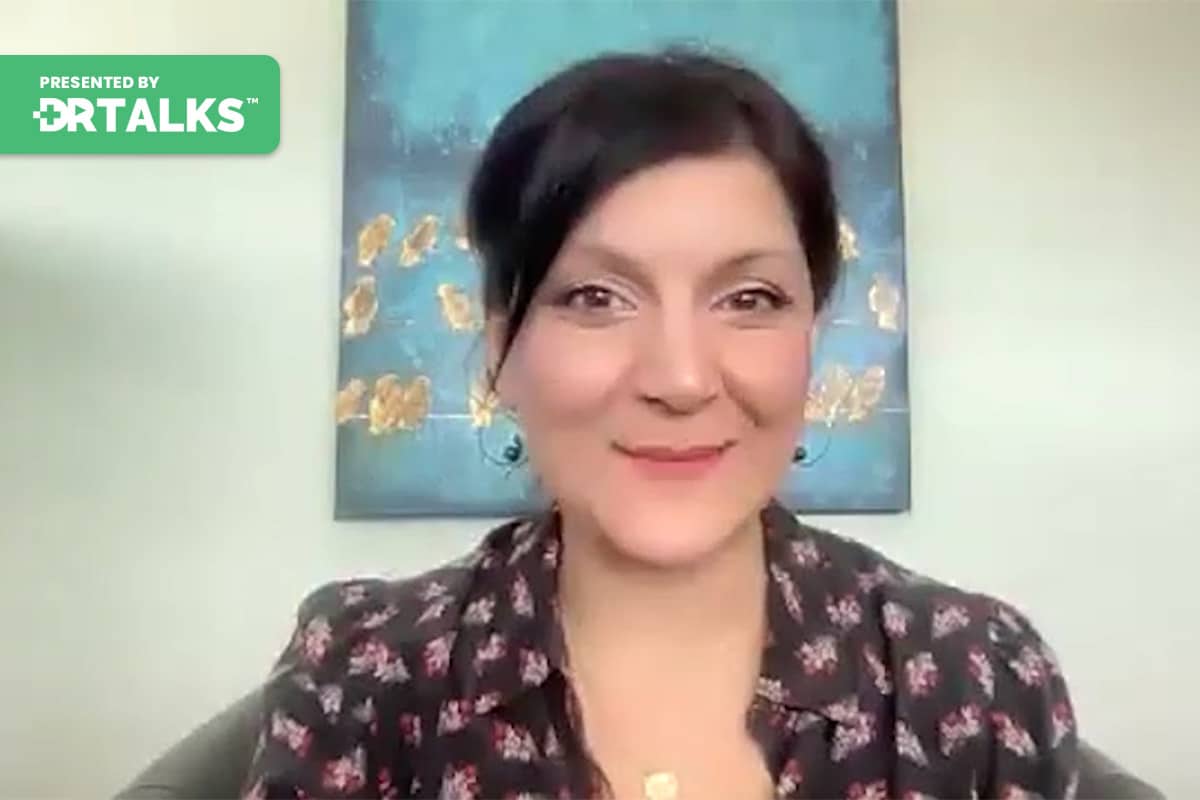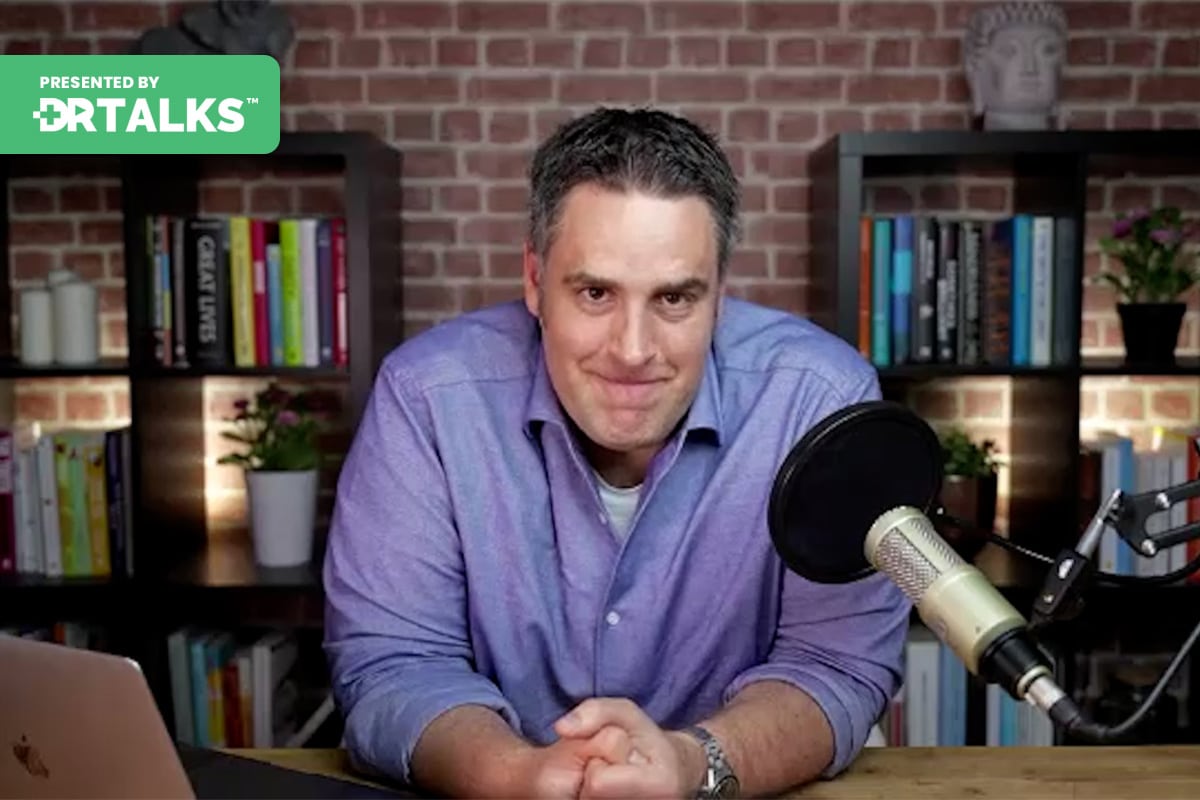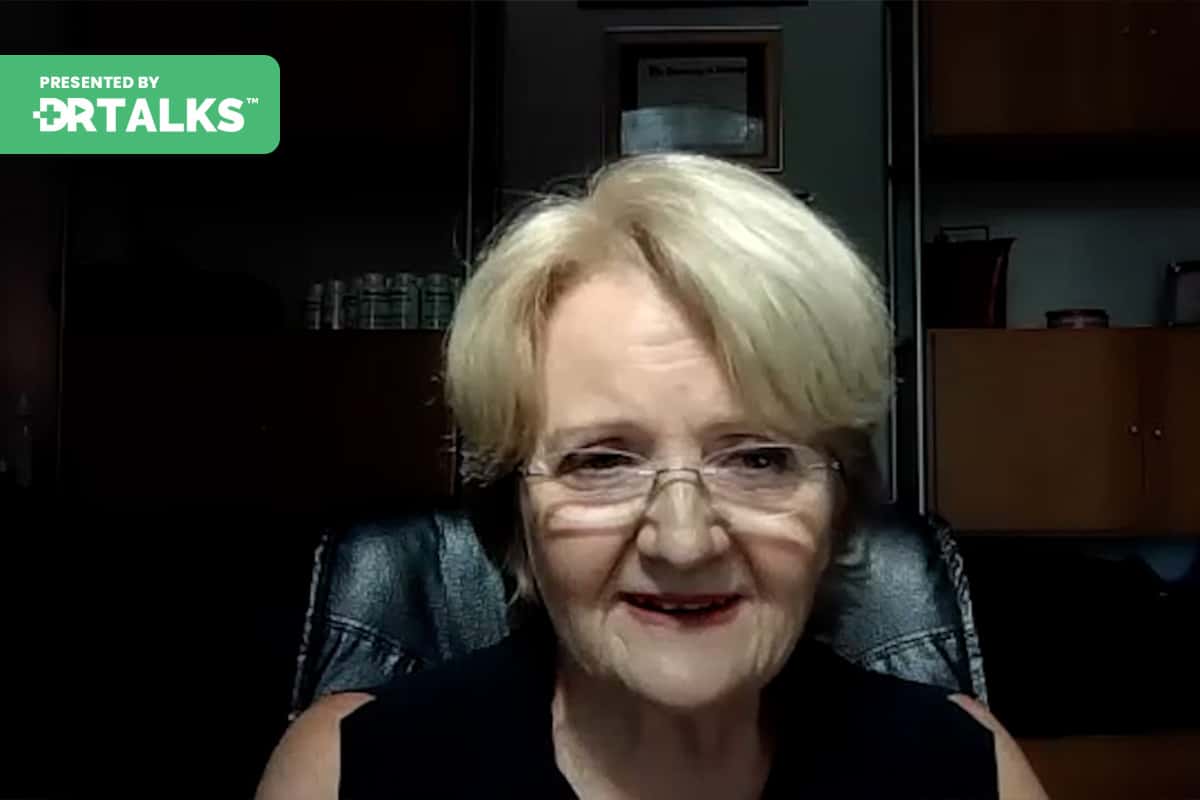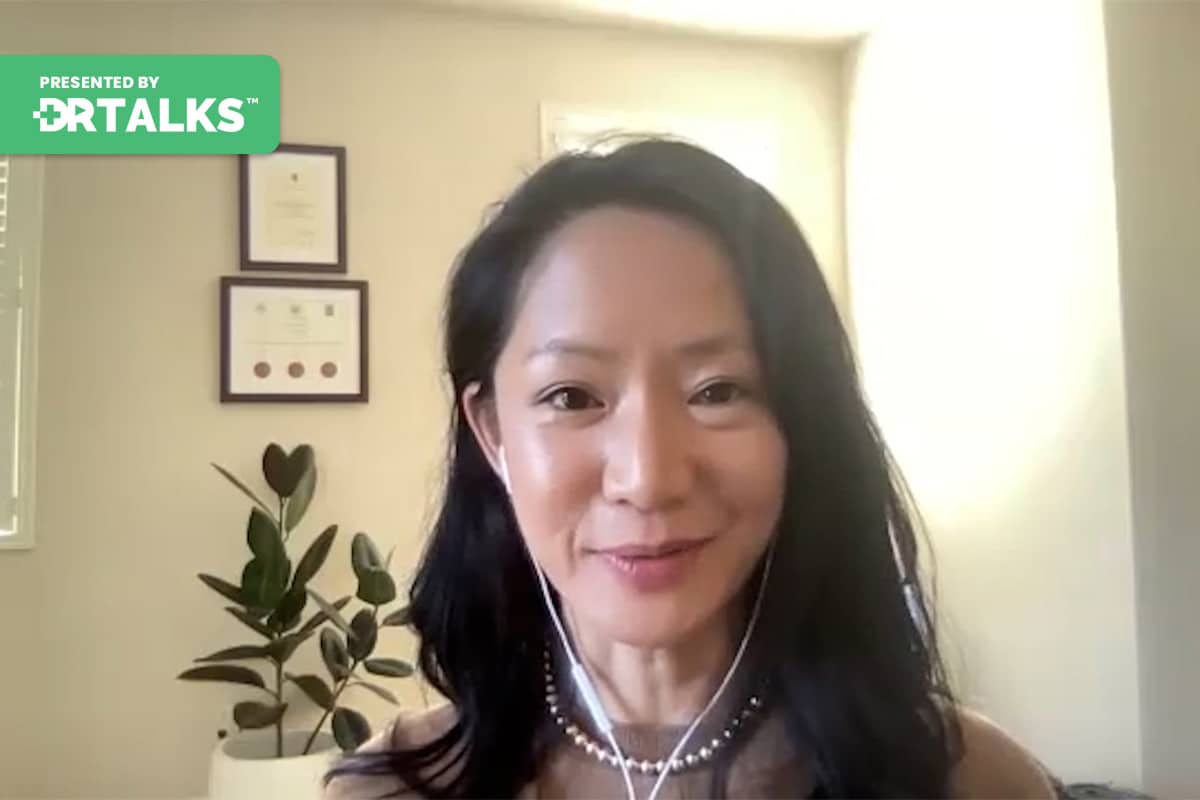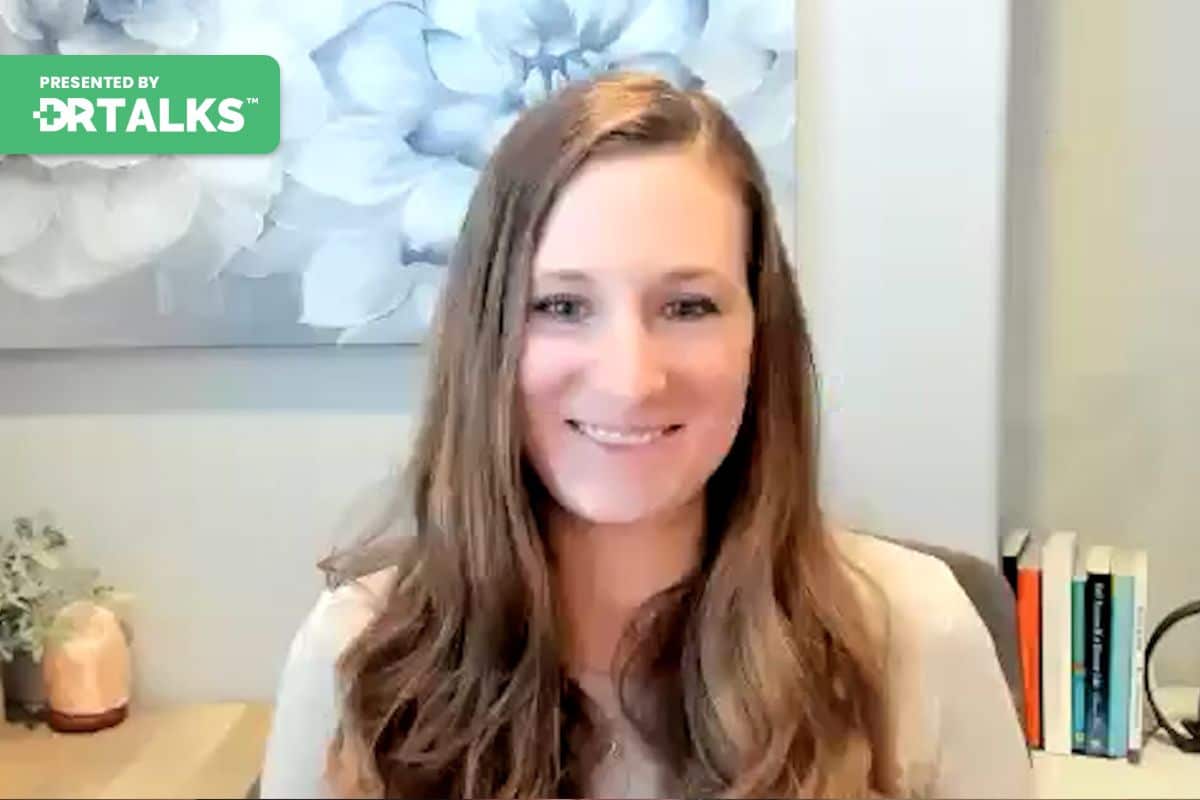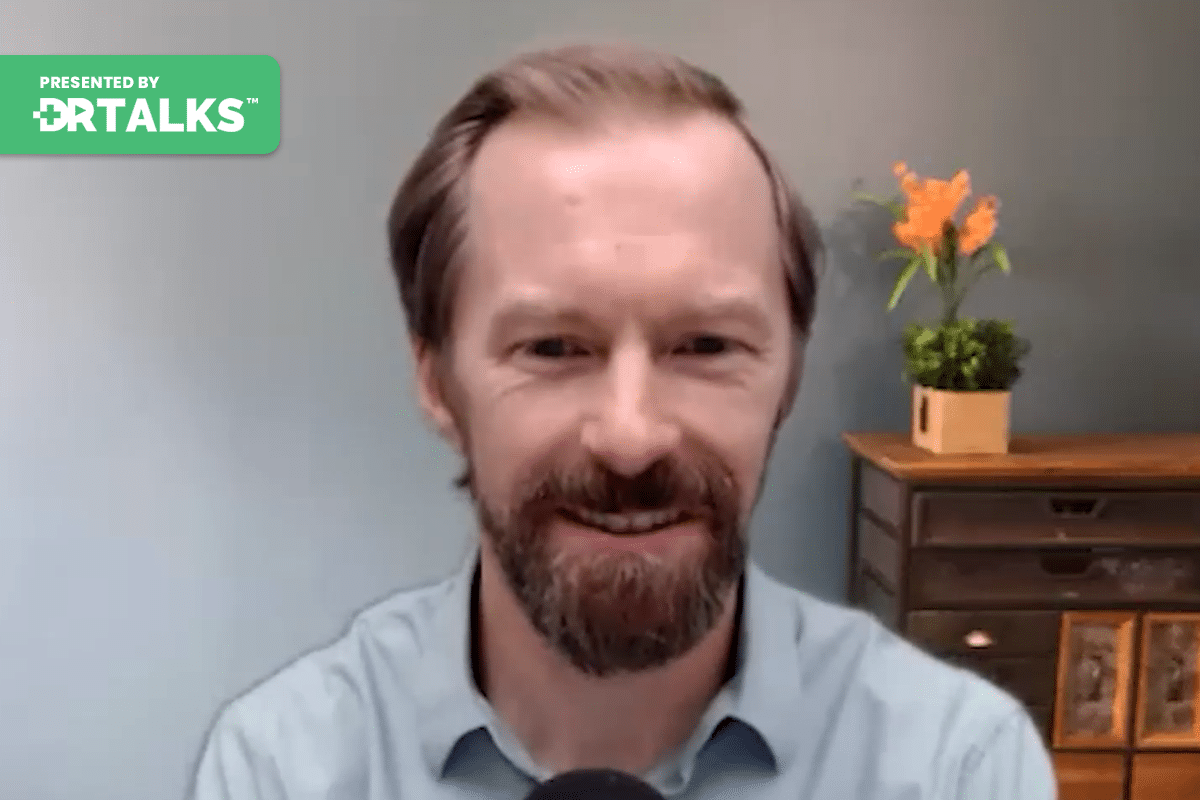Join the discussion below

Wendie Trubow, MD, MBA, IFMCP is a functional medicine gynecologist with a thriving practice at Five Journeys, and is passionate about helping women optimize their health and lives. Through her struggles with mold and metal toxicity, Celiac disease, and other health issues, Dr. Trubow has developed a deep sense of... Read More

Nafysa Parpia, ND has an independent practice at Gordon Medical associates, specializing in the treatment of Lyme disease and other complex chronic illnesses such as autoimmunity, mold toxicity, fibromyalgia, environmental toxicity and gastrointestinal disorders. Her patients with chronic Lyme Disease are typically those who either do not do well with antibiotics, or prefer... Read More
- Patients with complex chronic illnesses often don’t tolerate a detox and need a pretox
- So, what is a pretox?
- Who needs one?
- What does one focus on during the pretox?
Wendie Trubow, MD, MBA, IFMCP
Hello and welcome to this episode of the Environmental Toxicants Autoimmunity and Chronic Diseases Summit. I’m Dr. Wendie Trubow, MD, MBA and I’m so psyched that Nafysa Parpia is here today. She is a board certified naturopathic doctor. She spent the last decade treating patients with complex chronic illnesses. So she’s perfectly suited for the summit. She did significant training with doctors, Dietrich Clinghard and Dr. Isaac Eliaz, both of whom are, I’m a huge fan and Dr. Eliaz is on the summit. Dr. Parpia targeted system of care includes a synergistic blend of regenerative medicine, micronutrient peptide, therapies, function, nutrition, lifestyle counseling, and more. Nafysa. Welcome. I’m so grateful you’re here and that we can talk about this. Thank you for being here,
Nafysa Parpia, ND
Wendie. Thank you for inviting me and thank you for doing this summit. Such an important topic and people are really going to benefit.
Wendie Trubow, MD, MBA, IFMCP
Yes. So let’s dive in. You’re really, really focusing on pre-talks. So what is the pre-talks?
Nafysa Parpia, ND
Yes. So I coined this term because I have so many patients who have come to me that they’ve tried to detox prior to coming and it went terribly. So they maybe they had headaches from it or brain fog or joint pain or muscle pain. Most of my patients already have these symptoms, but then they got exacerbated from the detox, right? So, detox causes temporary inflammation that just comes with the territory. So now if these patients are already in a state of inflammation, if we try to detox them, it’s just going to further increase the inflammation, right? So their mitochondria instead of creating a teepee for cellular use, they’re now creating external 80 P. That’s the cell danger response at stage. One of the cell danger response, they’re in a state of oxidative stress and inflammation and that’s supposed to be temporary. But in a lot of these patients, it’s not temporary anymore because they’ve had so many insults to their system. Those insults include environmental toxins and a multitude of infections. So now they’re so
Wendie Trubow, MD, MBA, IFMCP
With these patients know that they needed a pre-talk if they had tried to do a detox and got sicker. Basically, these hyper sensitive, highly reactive humans.
Nafysa Parpia, ND
Yeah. And the thing is they don’t know. So they try a detox and then they come and you’ve probably had this happen to, they say I don’t, please don’t put me through a detox. I don’t want to do that again. I tried it. It was horrible. Then I say okay, we’ve got to take a step back and, and try to understand why this happened to you and then let’s prepare you and that’s a very deep and personalized process for each patient.
Wendie Trubow, MD, MBA, IFMCP
So, talk to me about who are the people who typically needed a pre talks. I think we’ve landed on it, but I want to really drill into that.
Nafysa Parpia, ND
Thank you. Yeah. So I’m gonna start with a caveat, right? So our bodies were designed to eliminate toxins instead of their waste naturally. But we didn’t evolve to catch up with this burden of environmental toxins in our environment. That’s just not how we were designed. We haven’t caught up with that yet. I don’t know if we ever will. Right. So this constant exposure to talk since results in an increased toxic load in people. And then more research shows I’m sure you’re talking about this on the summit. Two more research shows that environmental toxins, chronic, low grade exposures do cause autoimmunity and they do cause immune dis regulation. Some of the patients who suffer from complex chronic illnesses.
I’m finding actually this is the majority of my patients. They need pre talks first because they’re coming in a highly inflamed state in a state of oxidative stress. So this includes patients who have autoimmune conditions, fibromyalgia, chronic lyme long haul syndrome, post infectious illnesses. All these mystery cases, mystery illnesses usually underneath that is oxidative stress and inflammation that’s driven by a combination of environmental toxins and infections.
Wendie Trubow, MD, MBA, IFMCP
I’m laughing as you’re saying this, if you said because I’m thinking about, you know, the patients you walk in and they say I have, you know, this list of diagnoses and they’re all cool. And I’m thinking what you have is inflammation and mitochondrial dysfunction and toxic exposure and stress. So I’m thinking of it as a totally different way and, and laughing as you say these things because I feel like we’re on the same page that, that you’re not your diagnosis. You what’s happening underneath that is that your body is in a state of stress, an oxidative stress. So, okay. So before we dive into what a pretax is, I think you and I are also on the same page because I’m not a fan of, I don’t believe that quick fixes work and you alluded before we got on camera. Too quick cleanse is detox programs. Talk to me about the difference between a pre toxic detox and a quick cleanse.
Nafysa Parpia, ND
Okay. So, when, when we’re doing a pre talks, we’re really taking into the consider taking into consideration why the patient can’t handle that detox? Not only that, but why do they have these nebulous, these nebulous symptoms that have been very, very hard for doctors to pin down. Usually these patients are given waste basket diagnoses or there’s no diagnosis or they’re told this is all in your head. We can’t figure this out. So we’re gonna send you to psychiatry right. So right away, we know there’s something else going on and your inflamed, you’re an oxidative stress. We can test this on the labs. And of course, I do, I’m sure you do also. How inflamed are you? How much oxidative stress are you under? And why? So I’m looking for the root causes. Now, if a patient has stress in their organs of elimination, their liver, their kidneys, their lungs, then I know they’re not ready for a detox and, and I want to pre talks them first. And, and what, what were you, you asked something?
Wendie Trubow, MD, MBA, IFMCP
Well, I want to know about the things that people think typically like a juice cleanse or a three day fast or some type of quicker program that a lot of people buy into thinking, oh, I’m gonna detox but it makes them sicker or it doesn’t get them where they want to go. What you, how do you compare that to detox?
Nafysa Parpia, ND
Okay. So, first of all, everything I was just talking about these things need to be evaluated for the person is not ready for a quick, a quick fix detox. Because when that happens, we might start flushing toxins and we’re gonna increase stress in the body. We’re gonna increase inflammation, we’re going to put more stress on the mitochondria, right? That might even cause underlying infections to, to surface and become more active. So first, we want to investigate why. Second of all, a lot of these times these quick These quick fixes are, are not, they’re not, they’re not taking into account what the person is currently exposed to.
Maybe they have an exposure of mold and therefore mycotoxins in their house, maybe they’re not taking into account heavy metals, maybe the person has osteoporosis when we have osteoporosis lead that’s been stored in the bones gets, gets released as the bones turn over. And so this needs to be medically supervised and the quick fixes are not medically supervised. And so when you’re not understanding what’s happening in the patient at the medical level, it’s just gonna fail, right? So, I think that a lot of people think of detox as a casual thing to do, but I I actually consider it to be medical in nature. Not only that we want to test the environmental toxins, their genes of detoxification, their genes of inflammation. How high are your load of metals? You have an acute exposure of metals, have a body burden of metals. How about pesticides, glyphosate? Michael talks like I mentioned before, there’s so much to discover that’s pertinent to each patient that’s just not regarded in a quick fix detox.
Wendie Trubow, MD, MBA, IFMCP
I always say to people, you’re not going to untangle the problems of the past 10 to 20 years with something that lasts 3 to 5 days. It’s a I think, I always say people think of that if you’re healthy enough to do one of those, think of that like a reset your, your prepping the body for going down a different path instead of the one you’re on. But it’s not like you do it for three days and then you’re good. It’s like you do it for three days or five days and then that sets you on a new path for, for changing your behavior and changing your detox approach. So, I think of it more like the entry point as opposed to the endpoint.
Nafysa Parpia, ND
Exactly. But some people can’t even handle that entry point. Those are my patients, right? The ones with Lyme disease or chronic lyme, I’m talking about not acute lyme, even, even someone’s acute might not be able to handle that. But autoimmunity for instance, they probably can’t even handle the entry point. But someone who is in decent shape, they just need a little bit of balancing, they can handle an entry point. But like you’re saying, there’s so much more to it than that. Just
Wendie Trubow, MD, MBA, IFMCP
So how would people know? I mean, why, why can some people handle it? And some people can’t, you know, when these, these people who are listening, they know who they are, they know that they can’t handle the excursions, the challenges, why them, when their sibling, their parent, their cousin, they don’t have those reactions. Like, how do you explain that?
Nafysa Parpia, ND
I see this in my patients all the time. I have like, it’s usually, it’s often women who, who have, who have had more inflammation in their bodies and, and it’s often their husbands or, or their siblings. Right. And they don’t understand why, why is she sick? But I’m not a lot of times these people face isolation because of that. That’s a whole other topic on, of its own actually. But so what I’m talking about is root causes of complex chronic illness and how that’s unique to each person do the epigenetic expression. It’s about environment, meeting the genes and the role of environmental factors and the body’s internal mechanisms. So
Wendie Trubow, MD, MBA, IFMCP
Say more about that, like I, I think we’ve covered epi genetics, but just for the listeners, say a little bit more about the impact of what your, what happened in your grandparents and is now impacting you,
Nafysa Parpia, ND
Right? So, so genes don’t have to express, but when certain factors of the environment meet the genes, they trigger those genes to express. So we know that usually when there’s genes that express, which are causing us stress in the body, it’s due to inflammation and it’s due to stressors from often from the outside. So in my patients, I’m seeing it as environmental toxins infect, causing these certain genes to trigger.
So what are these genes? Depends on the person. It depends on the genetic tendencies. It could be a G I issue, it could be brain fog, it could be, it could be headaches or all of the above even. So, it’s very interesting to look at patients, genetic tendencies on the testing and then marry that with the environmental toxins or marry that with whatever the other stressors are. There’s genetic tests out there, they can do that and, and then we can understand a lot more about how a patient is expressing epigenetic lee and then how we can, how we can mitigate that. Really?
Wendie Trubow, MD, MBA, IFMCP
Right. I think it’s so there’s two parts of this. One is your genes play a critical role that whether your genes are turned on or off plays a critical role. But that’s not the end of the story because the other part of that is the way you were born and the way you were fed when after you were born and the food you ate and whether you had antibiotics as a child or frequent ear infections or whether you ate like me and had sloppy joes for dinner. I mean, my mom cooked them but they were still sloppy joes on a bun and whether you microwaved your food and whether you had toxic relationships and whether you, you sort of, you can think about it piles on because by the time you get to the age, you have a chronic disease, you’ve had a lot of things piling on, on top of your genes.
Nafysa Parpia, ND
Right? And so on the bottom line with this is that each of these is different than each person, right? Each person’s diet when they were growing up was different. Each person’s relation. Stressors are different. There’s physiological disturbances that are different. For example, if there’s stress in the connective tissue and the muscles, if they’re tight, that’s gonna, that’s gonna affect lymphatic flow. So you’re not gonna have as much drainage. There’s so many different factors that are different to each individual.
From the history to, from, from the history of, we’ll say relationships, history of diet where you’ve lived toxins, different exposures, the way, the way your body is even built injuries, all of those stressors are different for each person and then that triggers genes which are different for each person. And that’s why some people are more affected by toxins another. So when I tell my patients it’s never just one toxin, it’s never just one bug. It’s usually many, many factors.
Wendie Trubow, MD, MBA, IFMCP
Yeah, it’s such a beautiful way to put it and you alluded to, I think the impact of social isolation. Can you talk about that and how it like, what does it play? How does that play on physical health, the emotional and psychological health.
Nafysa Parpia, ND
Right. So a lot of my patients who have complex chronic illness, all of them do have complex chronic illness, but a lot of them have emotional, I’d say emotional struggles with it. Not because there’s something wrong with them inherently, which is what they’re often told, right? Just pull yourself up by your bootstraps, you have, you have issues or you’re lazy or you’re crazy. And that’s not true. So it’s very often that inflammation can, can cross the blood brain barrier and that can alter mood. That can, that can cause brain fog. It can, it can work on your master. It can inflame the, the, the, the hormones, the pituitary gland, right? So that can then have an effect on mood. So there’s so many reasons that a patient’s mood can be affected and then that leads to social isolation. A lot of times people are isolated by their family or by their friends, people don’t understand them anymore, they feel alone in their suffering.
And that’s very difficult. So I work with my patients on that, on that piece. But also how is that linked? Well, we know that stress causes immune dysregulation or it amplifies immune dysregulation at the very least. So now they already have immune dysregulation due to infections due to toxins, due to physiological disturbances, maybe due to relationships. And now that’s exacerbated by the trauma of being sick. And not only that, but the central nervous system, it gives us signals to heal or to not heal. So actually why peptides work because they’re signaling molecules, right? So they signal that it’s time to heal instead of time to put our defenses up just like a lot of the, you know, different medications and different herbs that we use, we can, we can use the signaling molecules that we can use, wants to put the defenses up, right? But the emotions mirror that as well. So, so working, working with patients to bring the defenses down, to feel safe again. There’s so many ways to do that, but it’s a key piece.
Wendie Trubow, MD, MBA, IFMCP
It’s so funny as you were talking, you know, I have Celiac and I historically have been super sensitive to gluten to the point where I stopped eating out. I don’t eat at my friends’ houses and I’m, as long as I don’t eat gluten, I’m totally fine. But the social isolation of not being able to be with people really took a toll years or, you know, I mean, it’s been 16 years and I’m finally now at the place, having done peptides and having done L D A and having done gluten free and mold removal and toxins removed, like it’s done a lot of work. But I’m finally recently I was able to eat out and not be sick. And I had this moment of hope like, oh, I could actually be connected to people over a meal at their house, right? Because I’m happy to cook, but sometimes people want to reciprocate. So it’s, it really is a core component of health which is being connected to others. And I will second that not being connected can be really bad for your health because it’s isolating. It’s terrible. So I totally can get what you’re talking about because it’s personal to me.
Nafysa Parpia, ND
Yeah. I’m sorry that you had to experience that. I’m sure it gives you more compassionate, working with your patients when they’re facing it.
Wendie Trubow, MD, MBA, IFMCP
It’s interesting. Like I really had to get, I think at some level I had to get the value of the connectedness to others. Right. That it actually brought me home to how important it is to be connected to people because at first it didn’t click and then I really got it. So it’s been a learning process, but I’m on the other side of it, I think I’ll keep you posted.
Nafysa Parpia, ND
So we granted
Wendie Trubow, MD, MBA, IFMCP
Yeah. Right. Like just being with people. So talk to me, can you talk me about the steps you walk people through? Like what we’ve talked about people needing pre-talks and how you might think you would be that person. But what do you actually do in a pre-talk?
Nafysa Parpia, ND
Right. So I’m understanding the individual in front of me first. So I’m trying to understand the organs of elimination, understanding it by doing a clinical intake for them. I’m also doing a lot of labs for them. So the organs of elimination being deliver the kidneys, the gut, the lungs, the skin. So if a patient is having issues in these organs of elimination, it’s just the wrong time to be flushing toxins through. So the gut is a big one for a lot of people, there are a lot of people who might have constipation. So if we’re releasing toxins from a sailor level and the patient is constipated, we’re just going to recirculate those talks. And so that’s the wrong time to detox. If a patient has leaky gut syndrome, we can test for that as well, then we can release toxins from the cells. But those cells can translocate from the gut up to the brain via this highway of nerves that we have between the brain and the gut.
So that’s the wrong time to flush toxins. A lot of my patients have interstitial cystitis or they have chronic U T I S. Obviously chronic U T I S and women post menopause usually means they need some bioidentical hormone replacement therapy or they might need some vaginal hormone cream to help with fixing the cellular integrity of that area of their body before we’re ready to detox because we don’t want to flush toxins through the system. If the general urinary, the system is compromised, what if they’re not sleeping adequately? Well, when we sleep is when the brain detox is when we sleep is when autopsy, gee increases, that’s, that’s autopsy. Gee is removal of seller waste and recycling it in the body. So if that’s not happening, we’re increasing the toxin load in the person causing further inflammation. So looking at the patient in front of me and working on what, how I’m going to set them up to detox is really important. I’m checking their inflammatory status. I can, I’m testing their inflammatory cytokines and if they’re in a state of immune dysregulation, which most of my patients are, right. They’ve got hyperactive immune system. On one hand, they’ve got mass cell activation syndrome. They’ve got autoimmune conditions. This is hyperactivity and immune system. On the other hand, they have a weak immune system, they can’t mount the appropriate immune response to kill off infections. Right. Then the immune system needs some retraining.
And so I’m retraining that with peptides. I tell my patients it’s like having an untrained fighter in the ring. So you’ve got this fighter in the ring that’s throwing punches and kicks. But in the wrong sequence at the wrong person, the timing is off. So I don’t want to detox you yet. I’ve got to retrain the nervous system, the immune system first or, their tissues are really tight in their neck, their shoulders, there’s a lot of lymph right here. And then they wonder why their, their, their faces becoming popular or they’re gaining weight. It’s not that they’re fat, they’re just inflamed. So these are the things we need to work with before starting the detox.
Wendie Trubow, MD, MBA, IFMCP
How long do you tell people it’s going to take, did you say look like the Eastern philosophy that it took you 20 years to get sick or it’s going to take you a good amount of time to get better. How do you manage people’s expectations around that? Right.
Nafysa Parpia, ND
I tell them, you know, you’ve, you’ve come to me at a time when you’ve been sick for a long, long time, most of my patients have been sick for a minimum of one year. It’s been often to 5, 10, some people, 20 years. So I tell them, look, it took you this long to get sick. It’s gonna take some time to turn this around and tell them often. I hope you like me because you’re gonna know for a long time, we’re gonna be on this journey together for a while or sometimes I say it’s like it’s like turning a big ship around. You’ve come to me when you’re a ship loaded with environmental toxins loaded with infection, it takes some time to turn that around. But if you were a kayak, we could just swiftly make that happen.
So, we have to be patient and take it low and slow and then there’ll come a time when we can increase the rate of detox, increase the rate of killing infections. But we’ve got to start low and slow. Sometimes I tell them we’ve got to come in through the back door, not the front. If I come in bursting through the front door and start to kill infections and detox you, you know, that’s gonna backfire So I’ve got to come in very often. The peptide therapies, balance, the immune system, balance oxidative stress and then we can come in and start infections. But usually when the patients are saying, thank goodness you’re saying this actually because I don’t want to start fast. I know every time I’ve tried it hasn’t worked. So,
Wendie Trubow, MD, MBA, IFMCP
What’s the, what’s the quickest people have someone has ever turn that ship around and been able to go from nothing to starting their journey.
Nafysa Parpia, ND
Yeah. I’m thinking in particular of a patient who, he was an athlete really strong, really healthy and, he got bit by a tick and after that his life went downhill. He could, it was a very difficult life. His movements were compromised, his gut was compromised, his sleep was compromised. Energy was fatigued all the time. He came from another state. He came from the east coast and we’re in California. He came and he stayed with us for treatment for six months. That was intensive treatment. So, if someone comes from, comes to us from a lot of people come from outside of the state actually. But if they come and they stay for six months, it’s very often that we can do this intensely and quickly. Now some people, they can’t handle that kind of intensity or quickness. Right. They have to come, come for a couple of weeks, go back home, come back again in a few months for a week or two and we take it slow. So it depends on the patient but some people can handle more aggressive treatment. I tell my patients, some patients are like bulls and some are like butterflies, the balls. I have to give herculean doses of medicine to make anything move. Right. Nothing outside the standard. But I have to give them larger doses. The butterflies, I just tap them,
Wendie Trubow, MD, MBA, IFMCP
Wave it in front of them and they react,
Nafysa Parpia, ND
Wings are gonna crumble, right? So, so each patient is different. Some people just want to move fast and they can, some people want to move fast, they can’t, and then they say actually I prefer to move slower. So it depends.
Wendie Trubow, MD, MBA, IFMCP
It’s really amazing the visa to think of it like that. There’s a system to approach healing that systematic, it’s really systematic and, and it’s personalized. So each person gets what they need, which is amazing,
Nafysa Parpia, ND
You know, is our patient have been to the patients who come to our clinic have been to many other doctors before and they’ve tried the quick fixes like we just talked about in our interview and they haven’t worked. So then often we’re, you know, their, their fifth, sometimes 20th doctor and we have to take a different approach, has to be systematic and slow and very very personalized
Wendie Trubow, MD, MBA, IFMCP
As you mentioned, your clinic. Where can people find you?
Nafysa Parpia, ND
Right. So we are in the San Francisco Bay area, the clinic is called Gordon Medical focusing on complex chronic illness.
Wendie Trubow, MD, MBA, IFMCP
Got it. And before we wrap it up, is there anything else you’d want to share with people that I haven’t asked you?
Nafysa Parpia, ND
Yeah, I want to share that hope is an important thing. I have hope for my patients. A lot of times they come into me and they’re hopeless and, and so I spent a lot of time infusing hope into them. Well, first of all, I see patients get better. Right. And very often there’s an underlying reason that people get sick. And at some point in the middle of treatment, they say that I say that because I’ve been told this over and over again by patients. They say, you know, what had I not got sick? I wouldn’t have been able to write that book or I wouldn’t have been able to climb that mountain or I’m a better mom or a better dad since, since I became sick because I increased my, my patients that increased my trust in myself.
It grounded me, whatever the reason is, there’s always this silver lining. And I know that a patient starts to become better. I know that their healing journey has taken a turn for improvement when they start talking like that. That’s common. So I want people out there who are, are sick and they don’t know why they’ve got mysterious illnesses to know. First of all, you’re not alone. And second of all, I see hope in my patients every day and then I see that hope flourishing into actuality, into the actuality of wellness.
Wendie Trubow, MD, MBA, IFMCP
So funny you say that amen to that. I mean, I love that. Someone said to me once what you sell, I said I still hope that there’s, there’s a transformation is in front of you and it’s possible to achieve it. So it’s just funny that I feel like you’re talking my language, you know,
Nafysa Parpia, ND
I love it.
Wendie Trubow, MD, MBA, IFMCP
I know, I know, I know we’re on the, we’re on the Transcontinental like adore adoration society.
Nafysa Parpia, ND
Yes, we are.
Wendie Trubow, MD, MBA, IFMCP
So okay, so we’ll wrap it up here. So the Gordon Medical Clinic,
Nafysa Parpia, ND
Gordon Medical Associates, but the website is Gordonmedical.com.
Wendie Trubow, MD, MBA, IFMCP
Perfect. Okay, perfect for the listeners. This is a very, very special human and, and I mean, I love the work that they’re doing out there. So feel free to look them up and Nafysa from the bottom of my heart. Thank you. Thank you for being on this episode of the Environmental Toxicants Autoimmunity and Chronic Diseases Summit because really this is about hope and recovery and I think you’ve started the process to give people a window, you know, glimpse into the window of how to get there. So, thank you,
Nafysa Parpia, ND
Wendie. Thank you so much. I’m so happy to be here and I just adore you and I’m so happy you bring the summit together Yeah, thank you.
Downloads

